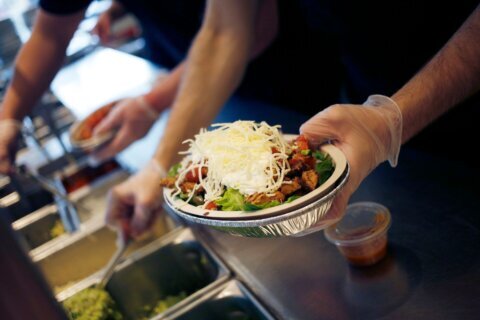It’s sad but often true: Healthy foods tend to cost more than unhealthy alternatives. Part of that is down to the way Americans produce food. It’s often cheaper to produce processed convenience foods, and those savings are passed down to consumers. On the other hand, a home cook who wants to put together a meal from scratch could easily spend more on the individual components of a dish than purchasing ready-made kits or non-organic versions of the same items.
If you’re careful and follow these tips, however, you’ll find there are a few simple ways to ease the sting of shopping for healthy foods.
[See: 10 Expenses Destroying Your Budget.]
Reevaluate Where You Shop
A lot of people mistakenly think that chain grocery stores are cheaper than boutique alternatives. However, Acme, Whole Foods and Harris Teeter are among the most expensive chains in the country according to Consumer Reports. If you normally do your shopping at one of these retailers, you may want to try a different place. Consumer Reports named Trader Joe’s and Aldi among those on the cheaper side, especially if you’re looking for inexpensive organic options.
Buy in Bulk Selectively
Big-box stores such as Costco are excellent for finding deals on bulk items. But if you can’t afford a club membership, some grocery stores also carry certain items in larger quantities. Make sure to check the unit price to determine whether the price is worth it. Buying nonperishable foods, such as canned goods and cereal, and paper goods in bulk is almost always the better option because of their long shelf lives. But when it comes to produce and items such as over-the-counter medication, which will likely go bad before you use it all, stick to buying smaller amounts as needed.
[Read: How to Feed Your Teen Without Destroying Your Food Budget.]
Cook in Bulk
Meal prepping is more than a proactive use of your time, it’s also a great way to help you save. Whether you are preparing a week of breakfasts for yourself or a day of lunches for your family, planning and preparing ahead of time can make mealtime less stressful and give you a sense of how much food to buy. There are thousands of guides online for preparing meals. Having a plan can mean no more nights of eating out to avoid cooking, less money spent on school lunches and actually having time to eat breakfast.
Use Loyalty to Your Advantage
Before you start browsing the aisles, make a plan. Check out your grocery store’s circular or website to find coupons and sales and plan family meals for the week based on these discounts. Keep a special eye out for sales on dry goods that will keep longer. Stores such as Wegmans and Stop & Shop have loyalty memberships that earn you extra savings at no cost.
[See: 10 Big Ways to Boost Your Budget — Without Skimping on Your Daily Latte.]
Skip the Pre-Cut Items
Produce is often among the pricier items on your grocery list. If you’re not doing so already, avoid buying pre-cut fruits and vegetables. It is almost always more cost-effective to buy regular produce and prepare it yourself.
Buy Fruits and Veggies in Season
Stock up on fruits when they are in season and freeze them rather than buying pre-frozen items. For example, berries are typically much cheaper in the summer months for regions that have cold winters. Frozen berries can then keep up to a year. Veggies are little trickier to freeze in order to maintain their flavor and texture, but it is doable. Onions, which are in season in late summer through early fall, and peppers, which are in season May through October, can be frozen raw and eaten later. Other veggies such as broccoli and squash should be blanched or partially cooked before freezing.
It’s What’s Inside That Counts
A lot of folks don’t realize that not all produce grows in picture-perfect shapes. Grocery stores select which crops look best in the store. So what happens to the rest of the food? Some startups, such as Misfits Market, offer a subscription box of discounted “ugly” produce that can save you money at the grocery store. Depending on where you live, you may also be able to grow your own produce more easily than you might imagine.
Skip the Pre-Packaged Aisles
Frozen dinners can be inexpensive and tempting for quick dinners, but they are often full of preservatives and artificial ingredients that might not be best for you and your family. Eat healthier by preparing your own version of the foods you would otherwise buy pre-made. Instead of buying a frozen pizza, buy or make your own pizza dough, then add sauce and fresh toppings. Chicken strips or nuggets are simple and fairly quick to make in a skillet. You can make macaroni and cheese from scratch with just three ingredients — pasta, milk and cheese. If you think outside the box, your family will be eating better and you may even save money.
Learn to Cook
This may seem like a no-brainer, but many adults are clueless in the kitchen. And when you are not cooking, there is a good chance you are spending money for someone else to cook for you. Take a cooking class if you can, read a book or call a friend or relative. So much of cooking is simply following instructions and knowing what tools to use. Once you master a few recipes, start making your own. Cooking for yourself or your family gives you the power to eat healthier and save money.
Keep a Running Pantry Inventory
You don’t need a smart refrigerator to tell you what groceries you need. Make a list of all your essentials and keep tabs on how much of them you have. When you are planning your meals or checking out sales, add those items to your shopping list, along with any essentials that need restocking. The bottom line is you will save money by having a plan. Grocery stores are designed to keep you browsing, so you fall into money-sucking traps. Beat the system with a little organization.
No matter what your budget is, you can find ways to feed yourself and your family healthy and delicious meals. And if you’re really struggling financially, there’s no shame in using resources provided by the government or your community. Check out local food banks and community gardens near you.
More from U.S. News
8 Big Budgeting Blunders — and How to Fix Them
12 Shopping Tricks to Keep You Under Budget
12 Useless Fees Draining Your Budget
How to Shop for Healthy Food Without Breaking the Bank originally appeared on usnews.com







